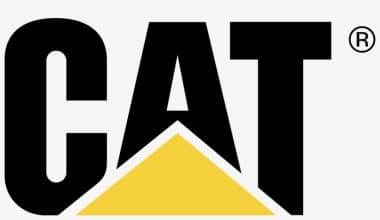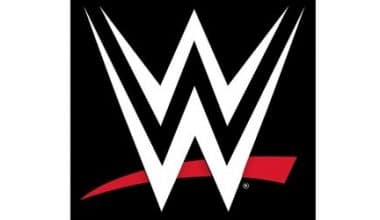The company’s logo is awash in a frenzy of activity and vitality. The Cisco emblem symbolizes the way in which advancements and innovations give rise to new and improved products that benefit the lives of people everywhere. In this article, you will learn more on the meaning and history of Cisco logo font, including the difference between the Meraki and the Cisco
Cisco Logo Meaning
To be more specific, Cisco is a subsidiary of Cisco Systems, Inc., a multinational corporation that designs, manufactures, and distributes networking hardware and software. Through its many subsidiaries, it engages in other enterprises. In late 1984, Stanford University computer scientists Leonard Bosack and Sandy Lerner established the firm. In 1985, the initial logo for the San Francisco-based corporation (also known as “Cisco”) was created.
The first CEO of the company, John Morgridge, was inspired to create the logo after seeing a picture of the Golden Gate Bridge, which spans the bay and connects San Francisco and Marin County. The bridge stands for global communication and the passage from the past into the future. The business is getting in touch with its customers by using cutting-edge technology and methods that were developed in-house. You can also find the heart of Silicon Valley, in San Jose, California. The group reformed in Delaware at the beginning of 2021.
What Does The Cisco Logo Mean?
The company’s engineers initially insisted on using the lowercase “cisco,” despite the fact that “Cisco” was really taken from the name of the city of San Francisco. The first version of the logo shows how the Golden Gate Bridge, a well-known landmark in San Francisco, is shaped.
What is the Literal Message of The Cisco Logo?
The founders noticed the Golden Gate Bridge as they were traveling to Sacramento to finish the company’s registration procedures. They chose the logo because the pipes above the word “Cisco” represent the Golden Gate Bridge.
What is The Slogan of Cisco?
“A campaign that connects the unconnected” is the slogan of cisco
What Cisco Means?
Any of the numerous whitefishes (genus Coregonus) with a wide mouth and a long, frequently protruding lower jaw are referred to as CISCO.
Why Do We Call It Cisco?
Leonard Bosack and Sandy Lerner, two Stanford computer scientists, founded Cisco in San Francisco in 1984. “Cisco” is an acronym for that city. Bosack and Lerner insisted on branding Cisco’s products with a lowercase “cisco” in the company’s early years because of this.
What is The Meaning of the Company Logo?
Customers use a logo to recognize your business because it appears on company signage, paper, and adverts.
Cisco Logo Font
The IT firm’s original founders placed an emphasis on straight forward presentation from the start. The Golden Gate Bridge in San Francisco, California, was their destination of choice. The writers placed great focus on illustrating the usefulness, usefulness, and practicality of their goods by linking the bridge to the signal reception diagram of an Internet connection.
Futura Bold, a geometric typeface, was useful to create the current logo. It’s sleek and ugly, with neatly trimmed ends. Designed by Paul Renner, it was released by Linotype for general use.
The present insignia, which comes in three different color schemes, is meant to be a reflection of all prior variations. There is a logo that is entirely black, another that is blue, and a third that features blue stripes and red writing. A pure white color serves as the backdrop.
Important Part of the Cisco Logo Font
That distinctive bridge is the logo’s most memorable visual aspect. It’s still a representation of the Golden Gate Bridge, even if it’s evolved a bit through time. The founder’s heritage and his desire to unite San Francisco with the rest of the globe are symbolized by the bridge as a design feature.
In addition, the founders’ intention to honor San Francisco and Silicon Valley as the global epicenters of technology is reflected in the company’s name: Cisco, which was created in the city and is spelled in a special rounded typeface.
The logo also features three distinct color palettes: marine blue, white, and red. The present design’s word mark, like the backdrop cover of the previous logo, is a sea blue color, which has long been associated with reliability, security, peace, and success. The color white represents loyalty, whereas the color red boldly conveys duty, emotion, and readiness.
The Brand Recognition of the Cisco Logo Font
The Cisco logo has always played a prominent role in the company’s advertising. About 15% of Cisco’s annual gross sales is devoted to marketing in an effort to expand the company’s reach and solidify its position as the undisputed global leader in networking equipment.
The logo has been included in shows, movies, documentaries, online marketing, sport sponsorship deals, award ceremonies, and educational certifications all around the world, representing the corporation and its high-quality products. The documentary “Something Ventured,” which focused on Cisco and its history, debuted in 2011.
The various accolades it has garnered have also helped it reach a wide audience. As a result of their excellent communication and cooperation with its stakeholders, Cisco was awarded the Ron Brown Award by the US president. The Secretary of State presented Cisco with an Award for Corporate Excellence in 2010.
In addition, Cisco has received a lot of attention for being a major backer of technical education. More than 180 nations have access to the excellent technical and certification training offered through the Cisco Academy Networking Program. Students benefit from this instruction since it equips them with marketable IT abilities.
Cisco’s sponsorship of major events including the London 2012 and Rio 2016 Olympics as well as the National Basketball Association (NBA) has helped boost the company’s profile. In the past, the company’s reputation has taken some hits. Among the many allegations leveled against Cisco include tax fraud, false stock statements, a refusal to adhere to licensing models, and complicity in the abuse of the Chinese people by the Chinese government. The Cisco logo has been an excellent representative of the company’s dramatic development from an idea to a household name.
Old Symbol of the Cisco Logo Font
Founder and former CEO John Morgridge has shared the history behind the Cisco logo. On the way to Sacramento, where the company was founded, he came up with the name and logo. On the way to Sacramento, where the company was founded, he came up with the name and logo.. The Golden Gate Bridge glistened in the sunlight, stunning them with its magnificence. Considering that “San Francisco” was initially written with a lowercase “c,” the company’s name was originally a shortened form of the city.
Shape of the Cisco Logo Font
Joint efforts by Cisco’s branding team, Joe “Phenom” Finocchiaro, and Jerry “The King” Kuyper yielded the current Cisco logo. In the logo, the bridge is represented by a series of vertical bars, while the company name appears below.
Colors of the Cisco Logo Font
Two colors, red and blue, are used for the Cisco logo. The color red is associated with duty, ardor, and a willingness to put in extra effort to achieve one’s goals, while the color blue is associated with calmness, optimism, notoriety, and wealth.
What Color is Cisco?
Given its resemblance to the home page of cisco.com, Cisco Sky Blue, the color we advise using for logos, is offered.
What Company Has an Eye Logo?
Since then, CBS has continued to employ the eye emblem, which now appears, unchanged since 1951, on no fewer than ten divisions of the brand.
What Does Log Logos Mean?
The word or form that expresses a thinking, as well as the thought itself, is referred to as lo’gos.]
What Company’s Logo is a Ghost?
Consequently, a ghost was used in the Snapchat logo design. The idea for Snapchat’s logo design came to Evan Spiegel, the company’s founder, in just one evening. Any brand or business is only represented by its logo.
What Company Logo is a Butterfly?
MSN is the business with the most recognizable butterfly logo (Microsoft Network). Benchmade and Sigfox are two such businesses with butterfly logos.
What Company Has a Heart Logo?
The logo for the Unilever ice cream line Good Humor is a heart. The logo of the clothing company Comme Des Garçons is a heart with two eyes.
What is Cisco Most Known For?
Internationally active American technology business Cisco Systems is best recognized for its computer networking solutions.
Old Cisco Logo Font
Sandy Lerner and Leonard Bosack, who are both scientists and are married, helped start the IT company. Leonard was in charge of computer science at the Graduate School of Business at Stanford University, and Sandy was in charge of computer hardware. Through their work together, there was an invention of the LAN technology, and Cisco came into existence.
In 1986, the management decided to file criminal charges against scientists who they claim to have stolen programs, equipment, and other forms of intellectual property that did not exist. This made them leave the university. The only difference is that Lerner and Bosack used their space to develop their software. One year after being let go, Stanford University provided them with the hardware and software for a multi-protocol router. The original crew also included CEO Bill Graves, programmer Greg Satz, sales manager Richard Troiano, and the two scientists.
The company’s founders wanted to honor their home city of San Francisco, so they named it after the famous Golden Gate Bridge tower and made a logo that was a slightly changed version of the city’s name. John Morgridge was given credit for having proposed this idea (second head of the firm). The logo’s idea is also to use cutting-edge technology to bring together previously isolated entities. The company uses four different logos throughout its various products.
Old Cisco Logo Font: 1984 – 1990
The symbolic representation of the famed bridge’s lookout towers is spot on in this first-rate work. They take the form of digital graphs and are made up of skinny lines of varying lengths that are joined at the top and bottom by continuous stripes; one side is curved and the other is straight. These red buildings don’t have pointed roofs but rather resemble tiny platforms. The insignia was thus never useful for anything other than nameplates, which explains why there is no writing within it.
Old Cisco Logo Font: 1990 – 1996
The logo went through a change in hue and design as part of the brand refresh. Now, white stripes of different heights cover the bridge, giving it an abstract look. It’s just a rectangle on a blue background with no links between anything. The red Cisco Systems label at the bottom is out of thin, sophisticated Sans Serif letters.
Old Cisco Logo Font: 1996 – 2006
There has been an update to the logo, and now it looks much better organized. This was easier by rearranging the constituent parts. Now the vertical stripes are uniform, distinct, and fewer in number. They’re narrower now, yet they still fill the entire blue rectangle because of their increased width. Architects raised the text and enlarged the letters to make a more prominent statement. Since “Cisco” was originally written with a lowercase “c,” a capital letter “C” was substituted for it.
Old Cisco Logo Font: 2006 – Present
Developers have enlarged the two tallest lines to provide a distinct shape of the Internet signal reception bands while maintaining the aesthetic of the renowned bridge. They also left a lot of empty space between them by spacing them out considerably. The business’s name appears at the very bottom, in little letters. Once the horizontal rectangle was gone, designers presented the logo in your choice of black, blue, or blue with red writing. Joe “Phenom” Finocchiaro and Jerry “The King” Kuyper authored this edition.
Why Do People Leave Cisco?
Particularly those in enterprise sales who are responsible for closing the biggest deals at the company are packing up and leaving Cisco as a result of these higher quotas.
Why is Cisco So Good?
It’s a place of unadulterated creativity where staff members are valued and recognized for bringing their authentic selves to work. Cisco employees are empowered to be disruptors in the effort to change the world by the amount of true authentic support from leadership as well as the abundance of developmental programs and culture groups
Why is Cisco Popular?
Cisco provides a wide variety of goods for its customers, and it has been updating those products throughout time to reflect advances in technology. Since Cisco is well-known in its industry, installing gadgets from it gives the consumer the gratification of knowing they selected a top-tier brand.
Is Cisco Better Than Google?
In six categories—culture & values, diversity & inclusion, work-life balance, CEO approval, referral to a friend, and positive business outlook—Cisco Systems received higher scores. In the following 3 categories, Google performed better: Overall Score, Salary & Benefits, and Career
Cisco Brewery
Randy and Wendy Hudson started Cisco Brewers in 1992 when Wendy gifted Randy a home brewing kit. After attempting one recipe with malt extract, Randy threw out the book and improvised a grain mill out of a small pasta roller machine. There was also no mistaking that he belonged there. Wendy may have been convinced to continue seeing this guy after drinking some of his beer.
As luck would have it, Randy and Wendy ran into Dean and Melissa. In May of 1992, Randy and Wendy answered an ad in the local paper and moved into the loft above the winery to be closer to the Longs. They found that making wine was fascinating, and they didn’t mind at all that they were essentially living on top of thousands of gallons of the stuff.
Except for the cold room, which was kept chilly by an air conditioner, Randy and Wendy sold beer from the outdoors. As far as onlookers were concerned, they may as well have been brewing moonshine. One of Cisco Brewers’ claims to fame was that they were the only outdoor brewery in the United States.
Randy and Wendy met Jay Harman in 1996 while he was a senior at Fairfield University working on his business thesis (CT). His plans to start a brewery on Nantucket were on hold when he found out we were already in the business. Jay began working at Cisco Brewers after graduating in 1996. It’s a relief that he’s on board with Cisco. Considering how hard he works managing their company, he probably would have been a formidable opponent in a competition. He also capped 60,000 bottles by himself in his first year.
Dean had the vision to make the connection between micro-distillation and the alcohol amusement park they were developing during the brewery’s rapid expansion. Dean applied for a license to make spirits with high alcohol content in 1997. He thus wanted to make some grappa and fruit brandies. Through trial and error, they discovered the ways Cisco Brewers and Triple Eight Distillery make their products complement each other in interesting ways. After all, distilled beer is whiskey. In the fall of 2000, the Commonwealth of Massachusetts gave Triple Eight Distillery a license to make high-proofed spirits after the company got through a complicated set of rules. Single malt whiskey known as “Notch” (which stands for “not scotch”) is now being produced by Triple Eight Distillery.
To counteract the lengthy time required to age whiskey (at least five years “in the wood”), the new distillers decided to experiment with vodka as well.
They solicited the general public to buy futures on each barrel of Notch to get the required funds (an option still open to the public today). This means that the first liquid to be in a bottle in their factory was Triple Eight Vodka. Triple-distilled from organically produced maize, it’s mixed with sand-filtered island water from well #888 to create a very premium spirit.
The velvety taste and smooth finish of this tasty vodka are largely attributable to its purity of spirit and moderate filtering. The first thing a newcomer to Triple Eight Vodka typically notices is how easy it is to consume. Making bourbon, gin, and rum didn’t take long to follow.
Presently, you can find their items in 12 different states, but that number is quickly expanding. The Wall Street Journal, CNBC, Associated Press, Boston Magazine, Agenda Magazine, Elle Magazine, and many others, have all written a lot about us recently.
With over 200,000 tourists coming to Nantucket Island every year, the island itself might be their best marketing tool. At 5 and 7 Bartlett Farm Road, respectively, you’ll find Cisco Brewers, Nantucket Vineyard, and Triple Eight Distillery. They also hope to meet you the next time you visit Nantucket Island, as we are open all year round.
What You Can Use a Cisco For?
Cisco’s networking solutions link users, computers, and computer networks, enabling information access or transfer regardless of variances in location, time, or computer system type.
Is IT Hard to Get a Job at Cisco?
Yes, finding a job with Cisco Systems is not difficult. Cisco Systems has a strict application and interview process, so it goes without saying that it’s not easy to get a job there that has something to do with technology. Depending on where you are in your career, Cisco also offers a range of positions with varying degrees of experience.
What is Cisco’s Biggest Product?
Cisco’s “Infrastructure Platforms” division is by far the largest, bringing in over 27.1 billion dollars in revenue for the company’s fiscal year 2021. Cisco’s “Infrastructure Platforms” business deals with switching, routing, wireless, and data center equipment, as well as other networking technology solutions.
Is Cisco a Good Company?
So, here is thus a comparison of what it’s like to work for Cisco and what it’s like to work for a normal company. Compared to 57% of employees at a typical U.S.-based corporation, 96% of Cisco employees describe the organization as a wonderful place to work. The Great Place to Work® Global Employee Engagement Study is the source.
Cisco Meraki
The specifications of a Cisco or Meraki switch can be directed to your needs, and both brands offer layer 3 routing as standard. Because of this, the best switch for you depends on your preferred method of switch management. Meraki MS switches are easy to manage and have an easy-to-use dashboard and licensing system. They also automatically update their software. Cisco, on the other hand, gives you more control over the settings, software licenses, and software updates for your switches.
In general, Meraki MS models are what you should look at if you’re working in a tiny space (or if you just don’t want to give much thought to your switch). However, due to its greater flexibility in bigger and medium-sized networks, Cisco is the superior choice. Some key differences and similarities between these two types of switches are as follows:
Similarities Between Cisco & Meraki
#1. Port and Power Features
You’ll find a lot of overlap between Cisco and Meraki switch specs. For instance, in both cases, the quantity and arrangement of ports are equivalent. Power-supply-based, PoE, and hybrid PoE switches are all available from Cisco and Meraki.
As long as the first and subsequent switches are stacking enabled and compatible, you can physically stack devices from both manufacturers. Based on technical specs alone, both Meraki and Cisco switches are capable of handling any IT environment.
#2. Layer 3 Networking
Both Meraki and Cisco’s switches offer Layer 3 networking as an add-on. Routers operate at layer 3 of the OSI networking paradigm, allowing layer 3 switches to handle both internal and external traffic. If you go for a switch that supports this feature, you can ditch the router in your networking stack and gain an extra port in the process.
Differences Between Cisco & Meraki
Here are the differences between Cisco and Meraki
#1. Electronic Stacking
There can be stacking of Cisco or Meraki switches on top of one another, allowing you to use several switches as if they were one. After buying switches that can do this, you will need to add the right stacking switches to your setup.
Meraki also offers a stacking feature that allows virtually stacking of the switches. A network administrator can use tags to organize switches into groups for easier management. Even if switches are located on different floors or in different buildings or different departments, they can be managed as a single unit.
#2. Renewing Your License
When comparing the Cisco Catalyst 9000 series to earlier series, one of the most notable differences is the requirement to purchase Cisco DNA licenses alongside each switch. Some have even gone so far as to say that Cisco is becoming more like Meraki in that both companies demand that you buy a license along with their hardware. Both companies require you to buy licenses to use their central administration tools, but their approaches to licensing are very different.
First, there is a configuration of the Meraki dashboard, so all you need to do is activate your license and start using your new device as soon as it arrives. DNA Center, on the other hand, needs licenses and an appliance. This means that before you can use Cisco’s solution, you’ll need to buy some hardware and set it up. Modifications to renewals are also distinct. If you don’t renew your DNA Center license before it expires after three years, your Meraki switches will stop functioning.
#3. Upgrade Roll Outs
If you value precision and a more hands-on approach to switch deployment and management, Cisco is likely to be a better choice for you. If you’re looking for a simple networking experience, Meraki is the way to go.
You can find a good example of this in the Upgrade topics. With a Meraki switch, you can only delay the release of new firmware until a specific time. There will be an upgrade of devices without notice, and you have no say in the order of replacement. This can be problematic if the upgrade breaks some aspect of your infrastructure, and the only answer is to file a case with Meraki support and figure out a fix while still running the new firmware.
A Cisco Catalyst 9000 switch, on the other hand, allows you to pick and choose which devices and when to upgrade them. This is true regardless of whether or not a DNA Center is present in the network.
What are The Skills Requirements for Cisco?
CCNA skill categories to include on your CV are:
- Engineering for networks.
- EIGRP, OSPF, and BGP are all routing protocols.
- Operational assistance.
- Networking skills for SAN.
- Integrated Communications
- OSI diagram.
- Knowledge of IPv4 and IPv6 multicasting.
- Firewalls from Cisco ASA.
What is Salary at Cisco for Freshers?
The annual salary range at Cisco Systems Inc. is $71,609 to $160,122 on average.
What Coding Does Cisco Use?
Java is frequently useful as a plugin or embeddable language in Cisco products (Such as UCCX or CVP) that accept plugins or embedded code, including the majority of the company’s UC apps. For low-level call control, there is also the Java-based JTAPI package available.
Is Cisco Good for Freshers?
For many reasons, including a competitive cisco pay for freshers, a welcoming environment in which to expand your network, and outstanding professional progression prospects, Cisco is a great place to start a career.
What Degree Do I Need To Work At Cisco?
Candidates for hardware and software engineering employment at Cisco must hold a bachelor’s degree minimum; some positions may call for a graduate degree.
Is Cisco Better Than IBM?
Based on financial indicators, Cisco is in a little stronger position, mostly as a result of its better net debt position. Cisco fared far worse during the most recent recession than IBM. In comparison to Cisco, IBM has increased its dividend for 11 consecutive years.
Does China Use Cisco?
In addition to a sizable R&D facility in Shanghai, Cisco has established 16 branch offices across China.
Related Article
- How Cisco Brand Positioning Is Making Them Stronger.
- 4 WAYS TO PROTECT YOUR BUSINESS FROM FIRE DISASTER
- The Top Best PBX SYSTEMS for SMALL BUSINESS in 2023 (Updated)
- REMOTE ACCESS VPN: Meaning, How It Works and Best Vpn






